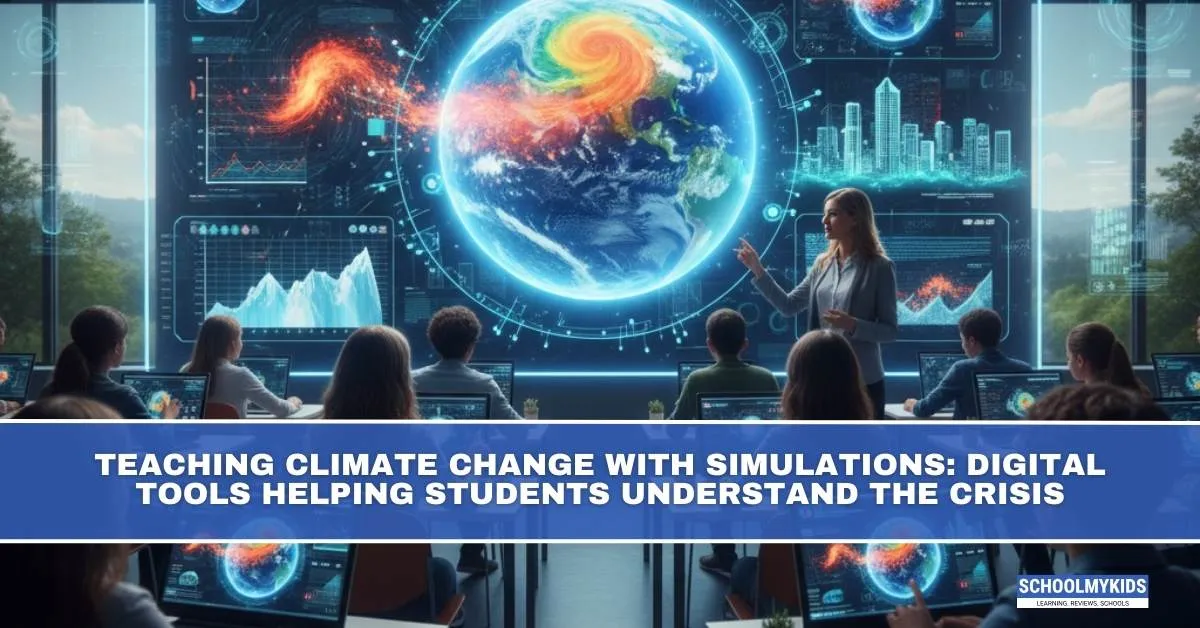Climate change is one of the greatest challenges of our time, but teaching it has always been messy. Graphs, lectures, and grim warnings about rising seas rarely light a fire in students’ minds. Numbers feel abstract, and “2°C of warming” doesn’t translate into lived reality. Enter digital simulations—tools that allow students not just to hear about the climate crisis, but to experience it virtually.
These simulations are making climate education visceral, interactive, and urgent. Instead of passively absorbing information, learners now make decisions, see consequences unfold, and grasp the complexity of climate systems.
Why Simulations Work in Climate Education
Traditional classroom teaching struggles with climate science because the subject is:
- Complex: It involves physics, biology, economics, and politics.
- Invisible: Greenhouse gases can’t be seen, making the cause-and-effect link hard to visualize.
- Long-Term: The worst consequences unfold over decades, not days.
Simulations tackle these barriers head-on by making invisible processes visible and abstract timelines immediate. Students see what happens if carbon emissions rise, if forests vanish, or if global policies shift.
Types of Climate Simulations
- Interactive Models: Platforms like En-ROADS let students tweak variables—coal usage, renewable adoption, deforestation—and instantly watch the global temperature trajectory change. It’s systems thinking turned into a sandbox.
- Virtual Reality Experiences: Immersive VR simulations drop students into flooded cities, drought-stricken farmlands, or melting ice sheets. Instead of imagining climate impacts, they “stand” in them.
- Role-Playing Simulations: Students adopt roles—world leaders, corporate executives, activists—and negotiate climate agreements. They quickly discover how politics, economics, and ethics collide in decision-making.
- Serious Games: Games like Climate Challenge allow players to manage resources, balance budgets, and keep public approval while pursuing climate goals. Winning isn’t easy—and that’s the point.
Educational Benefits
- Engagement Through Experience: Students remember what they experience more than what they hear. A simulation where they fail to keep global warming under 1.5°C leaves a lasting impression.
- Critical Thinking and Systems Understanding: Learners see how interconnected systems are. Cutting emissions in one area may ripple into food prices, migration, or energy shortages elsewhere.
- Empathy Building: Walking virtually through a flooded village or negotiating with frustrated citizens builds emotional understanding—not just intellectual knowledge.
- Agency and Empowerment: By experimenting with solutions, students realize that choices matter, and small shifts can create meaningful change.
Challenges and Limitations
Of course, shiny tools aren’t perfect.
- Accessibility Gap: VR headsets and powerful computers aren’t available everywhere, especially in developing nations.
- Oversimplification: Simulations simplify reality to be usable, which can make them misleading if not contextualized.
- Teacher Training: Without skilled educators guiding them, simulations risk being treated as games without deeper reflection.
- Emotional Overload: Confronting climate catastrophe virtually can overwhelm or paralyze students instead of motivating them.
The Future of Climate Simulations in Classrooms
Expect simulations to get more personalized and collaborative:
- AI Integration: Tailoring scenarios to students’ local regions, showing impacts in their own city or village.
- Global Collaboration Platforms: Linking classrooms from different countries to tackle simulated crises together, mirroring real-world diplomacy.
- Curriculum Integration: Moving beyond “add-ons” to embedding simulations into core science, geography, and even economics lessons.
Conclusion
Teaching climate change isn’t just about knowledge—it’s about urgency and empathy. Simulations turn abstract warnings into lived experiences, equipping students with not only understanding but also a sense of responsibility.
The future of climate education may not lie in more lectures or thicker textbooks, but in simulations where students can see the consequences of inaction and experiment with solutions before the real world runs out of time.









Be the first one to comment on this story.